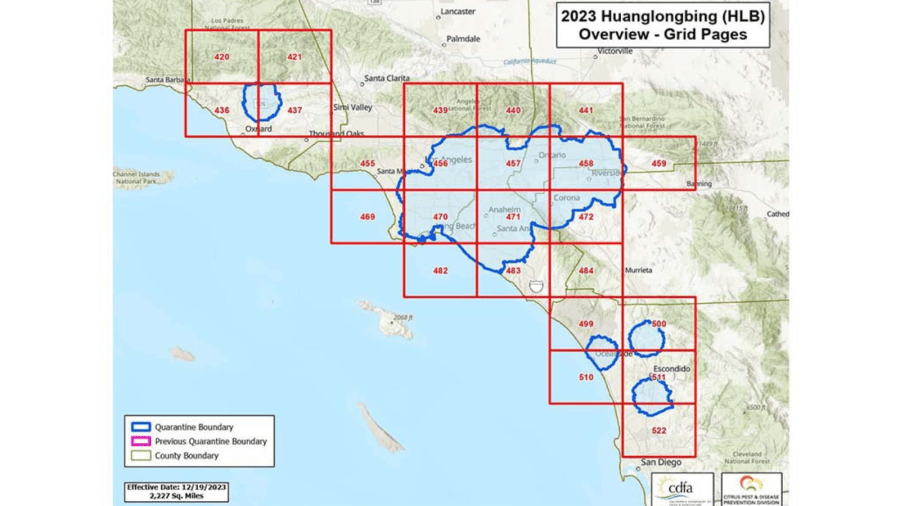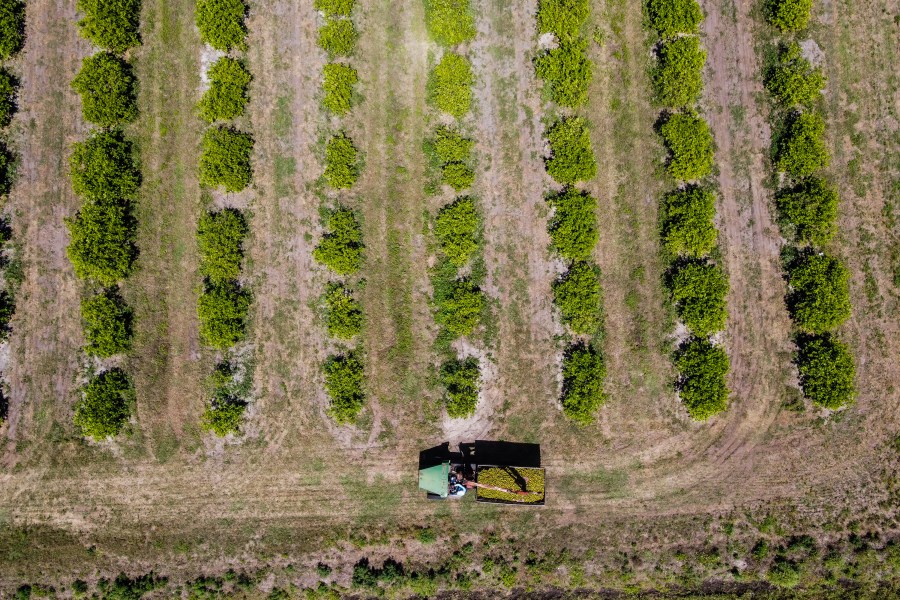First came the fruit flies. Now, the California Department of Food and Agriculture has issued a warning about another “highly invasive” pest causing disease in citrus fruits across Southern California.
The Huanglongbing (HLB) or Citrus Greening pathogen is found predominantly in Asia but has also been reported in several U.S. states as well as the Caribbean, Mexico and other parts of Latin America over the past 20 years.
It was first detected in California in 2012, CDFA officials said.
“HLB has been described as the most devastating disease of citrus in the world,” Food and Agriculture Department officials said. “HLB affects almost all citrus cultivars and causes substantial economic and environmental losses to the citrus industry as well as residential backyard citrus by shortening the life of trees and making fruit and juice inedible.”
CDFA officials have established several quarantine areas in Los Angeles, Riverside, Orange, Ventura and San Diego counties where residents are urged to avoid moving or sharing homegrown fruit.

According to the CDFA, HLB can be difficult to detect since the host plant may remain symptomless for months or even years before showing signs of infection.
“An early symptom of the disease is blotchy yellow asymmetrical mottling of the leaves,” the CDFA’s Huanglongbing pest profile said. “More advanced symptoms include twig dieback, stunting and decline in the tree’s health to the point where the tree bears only a few, small, deformed fruits that are poorly colored and bitter tasting. Tree mortality usually occurs several months to years after infection.”
The CDFA cited a study in Florida that found that HLB increased citrus production costs there by 40 percent and led to the citrus industry losing over $1.3 billion in revenue.
The disease is spread between trees by the Asian Citrus Psyllid and can be hosted on nearly all citrus plants and hybrids, CDFA said, making it much more dangerous than regular pathogens.
Currently, there are no “curative methods” to control HLB and there are no chemical controls that specifically target the bacterium, officials said.

“Comprehensive control measures for HLB focus largely on prevention of infection by eradicating infected plants, controlling the vector, Asian Citrus Psyllid and the production and planting of HLB-free trees,” the Department of Food and Agriculture said.
This is not the Golden State’s first recent interaction with invasive pests in recent months. The discovery of the Tau fruit fly, an exotic insect native to Asia that targets cucurbits, avocados, tomatoes and peppers in addition to citrus, prompted officials to quarantine part of Santa Clarita in July.
Queensland fruit flies were first discovered in SoCal in October and prompted authorities to establish another quarantine area in Thousand Oaks.
To report an unusual plant or pest in your area, use the CDFA’s Report a Pest Web App or fill out this form. In addition, the CDFA’s pest sighting hotline can be reached by calling 1-800-491-1899.
Click here to watch a video outlining how to check citrus trees for the Asian Citrus Psyllid.





















